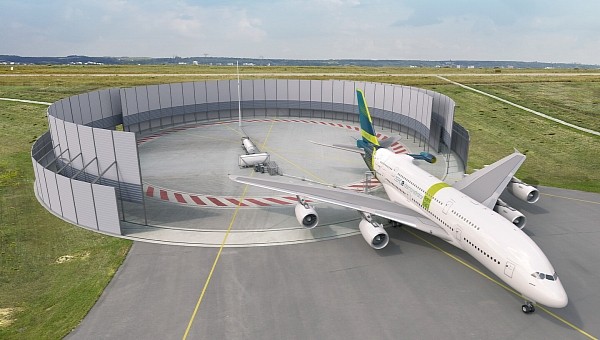Airbus announced that it will start building the first liquid hydrogen refueling station for zero-emission aircraft that is set to replace those running on kerosene. Climate ambitions force everyone to decarbonize and the aviation industry is not exempted.
World-renowned and top plane maker Airbus confirmed Thursday that liquid hydrogen is going to be pursued. The announcement for a brand-new refueling facility comes only days after Rolls-Royce (the civil aerospace company, not the BMW-owned British automaker) successfully tested a jet engine that used compressed hydrogen.
“We are developing a range of products based on hydrogen fuel cells, which mix compressed hydrogen with oxygen from the air and emit only water,” says Rolls-Royce. Naturally, Airbus doesn’t want to miss out on making planes that do not pollute the environment, so it might want to tap into that market before its main competitor – Boeing – finds the best recipe.
The French entity will build the world’s first liquid hydrogen refueling facility for aircraft named ZEROe. The construction will take around two years. Airbus and its partners are going to place it at the Toulouse, Blagnac airport. The company works with ArianeGroup – a joint venture that’s owned by Airbus together with Safran.
The French aviation player eyes the opening of the station in 2025.
"Preparing for the entry into service of a zero-emission aircraft in 2035 means that we need to mature all of the required technologies in parallel. By partnering with ArianeGroup, we will leverage well-known hydrogen expertise and other relevant space technologies in the pursuit of this goal," said Airbus’ CTO Sabine Klauke.
The ZEROe represents three concepts that are powered by hydrogen combustion through modified gas turbine engines. These rely on hydrogen fuel cells that create the electrical power required for efficient hybrid-electric propulsion.
Using liquid hydrogen to power aircraft isn’t something incredibly new – Ariane launch vehicles have been using it since the 1980s.
Finally, the aviation industry could benefit from switching as soon as possible to a zero-emission solution since Europe, America, and most of Asia and Africa want to do their best to lower greenhouse gas emissions. Operators could avoid future tariffs or other taxes.
“We are developing a range of products based on hydrogen fuel cells, which mix compressed hydrogen with oxygen from the air and emit only water,” says Rolls-Royce. Naturally, Airbus doesn’t want to miss out on making planes that do not pollute the environment, so it might want to tap into that market before its main competitor – Boeing – finds the best recipe.
The French entity will build the world’s first liquid hydrogen refueling facility for aircraft named ZEROe. The construction will take around two years. Airbus and its partners are going to place it at the Toulouse, Blagnac airport. The company works with ArianeGroup – a joint venture that’s owned by Airbus together with Safran.
The French aviation player eyes the opening of the station in 2025.
"Preparing for the entry into service of a zero-emission aircraft in 2035 means that we need to mature all of the required technologies in parallel. By partnering with ArianeGroup, we will leverage well-known hydrogen expertise and other relevant space technologies in the pursuit of this goal," said Airbus’ CTO Sabine Klauke.
The ZEROe represents three concepts that are powered by hydrogen combustion through modified gas turbine engines. These rely on hydrogen fuel cells that create the electrical power required for efficient hybrid-electric propulsion.
Using liquid hydrogen to power aircraft isn’t something incredibly new – Ariane launch vehicles have been using it since the 1980s.
Finally, the aviation industry could benefit from switching as soon as possible to a zero-emission solution since Europe, America, and most of Asia and Africa want to do their best to lower greenhouse gas emissions. Operators could avoid future tariffs or other taxes.






